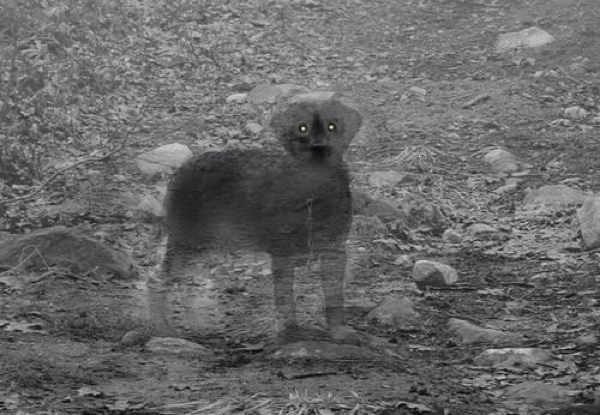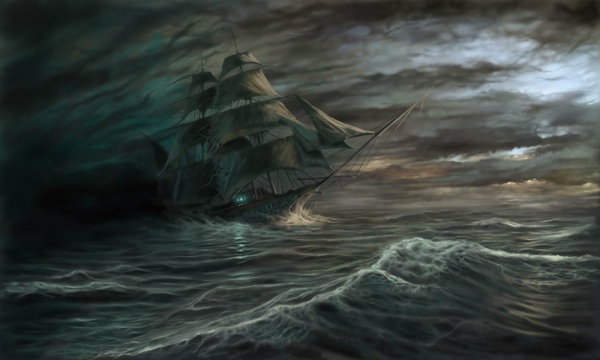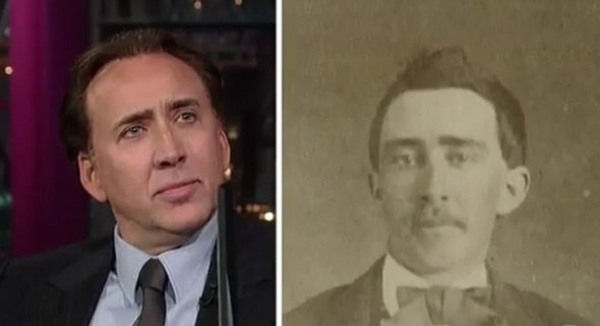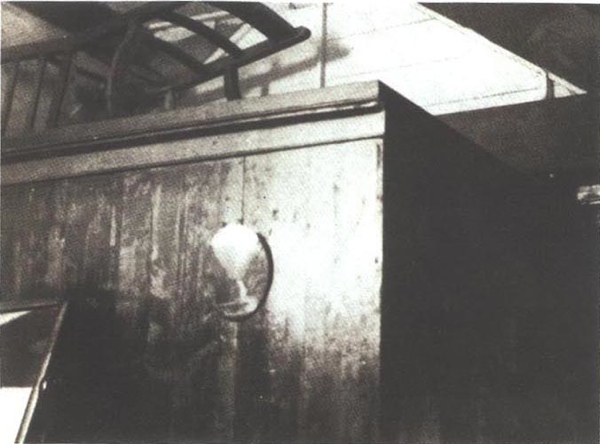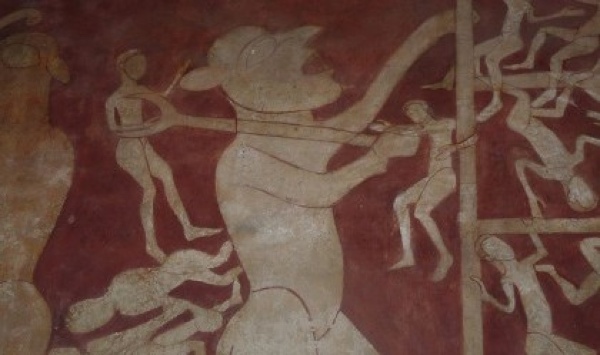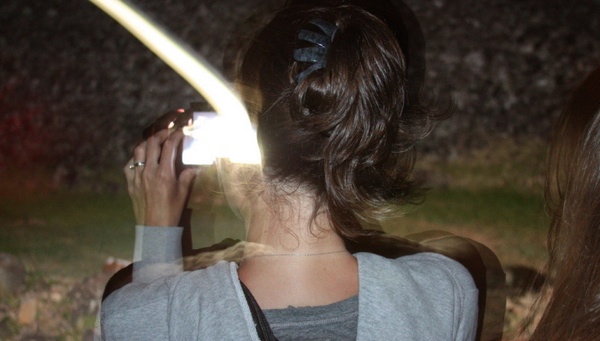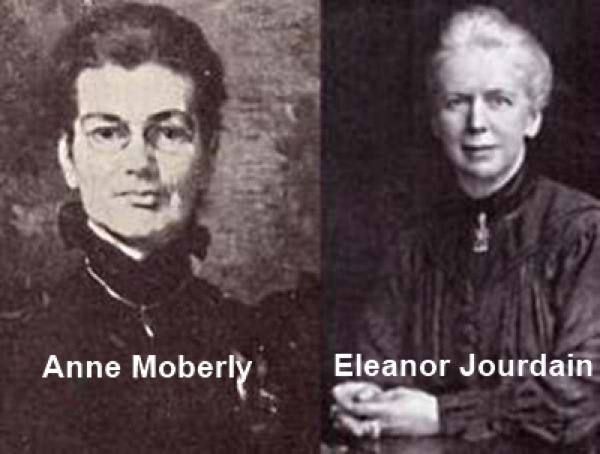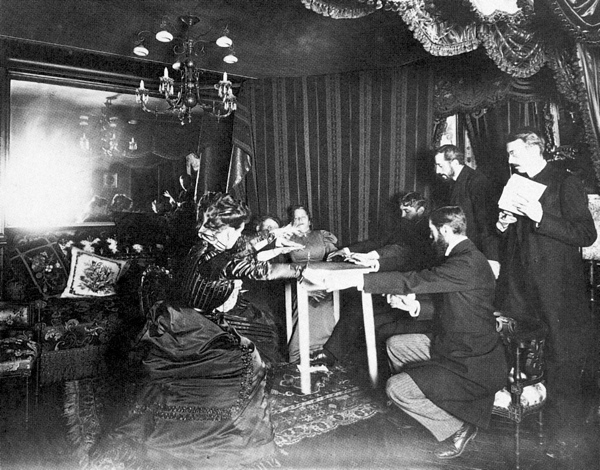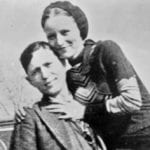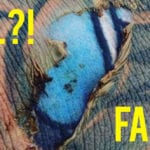They get spoken about so much, the everyday person, whether skeptic or believer, is familiar with these classifications of ghosts. Unfortunately, while these ghost types get all of the love and hype, some of their lesser known brethren get tossed to the wayside. The following ghost types in this list may not be glamorous, but that doesn’t make them any less mysterious or scary, in my opinion. So let us begin down this hall of unknown spooks.
Crowd demons are very strange anomalies. While demons seem to not be restricted or constrained by time and location, crowd demons seem to specifically show up in places that are inhabited by large groups of people, hence the term crowd in their name. Why crowd demons are attracted to crowds, there are no concrete answers. Theories range from energy emanated by the specific location, or an attraction to the photographer or bystander in the crowd. Standard apparitions may make singular appearances on film, but crowd demons tend to show up in numbers. When they do appear on film, crowd demons may take on various distorted shapes, some nearly unrecognizable to the human eye. One picture (shown above), shows what looks like a reptile shaped head biting down on the person standing next to it, while in the same picture, a darkened outline of a person sits among the onlookers, conspicuously standing out from the live members of the audience. Next to this figure, there seems to be a distorted face looking back at the camera. Perhaps these spirits arrive in numbers and among throngs of people because they are desperate to get noticed?
Animals are some of the most beloved members of families units, but somehow, after the pets pass on, their spirits get neglected. Professional ghost hunters, when they are one of their many sojourns, rarely seek out these nimble ghosts, opting instead for the sexier shadow people and poltergeists. Animal ghosts have been reported in many cases, yet they are overlooked. The infamous Bell Witch haunting, which plagued the family of John William Bell in the early 1800s, had reports of animal ghosts, such as phantom birds and vanishing dogs. Again though, in the case of these hauntings, the animal ghosts are just mere accessories to the more heavyweight phantoms. Animal ghosts make their presence felt not just in manifestations, but also sound and smell. It is not unusual for a person experiencing a haunting which includes animal ghosts to hear the pitter patter of the invisible animal, or whimpering, panting and scratching on the walls and doors.
The vortex is a supernatural phenomenon that the average layperson in the field of the paranormal may have not heard of and understandably so, as the vortex is a strange being indeed. It is unobservable to the normal human eye, usually showing its presence only in picture stills. The vortex is long—usually in the shape of a cigar or a metal rod—and contains a thread like design, making them appear almost like a turning screw in mid air. Vortexes make themselves known through temperature, making the immediate area they occupy cold. The vortex can be mistaken as the more common orb, as they both are travel in similar trajectories. The vortex is more of an indoor phenomenon, and like other types of paranormal objects, are usually attached to larger scale hauntings. Since they seem to solely exist within the confines of homes, there is the theory that they may be previous residents of the property. They may actually be vehicles for other spirits to piggy back on as they travel between their dimension and ours.
At one time, inanimate ghosts were all the rage in the ghost scene. The phantom ship, the Flying Dutchman, personifies what the inanimate ghost is all about. The Flying Dutchman terrorized sailors on the high seas in the 17th century, so much so that even gazing upon it meant almost certain doom for the voyage. The Flying Dutchman, apart from the most ardent of enthusiasts and opera buffs, is largely forgotten in this day and age, and no longer inspires the fear that it once did. Inanimate ghosts come in all forms, not just ships. They can be cars, trains, and even disembodied lamps. One thing that all inanimate ghosts have in common is routine; they all appear in the same time and place, traveling the same routes the vehicle (if it is a moving thing) was taking right as the moment of disaster. These ghosts are frozen in time, repeating their final moments, over and over again, without any hope of liberation from their perpetual cycle.
The “Doppelgänger” is unique among other ghosts. The definition of this type of ghost is actually found in the name. “Doppelgänger” is a German word for “double goer.” This ghost type has the ability to project itself in more than one place, hence the meaning of its name. As far as is known, no other ghost type has this kind of ability. But the real unique quality of the doppelgänger is that the person it projects to others can still be alive. So it is entirely possible that a person can see their loved one when they are not physically present. Another common scenario involving the doppelgänger is a person seeing the image of someone close to them, only to find out later that the person they saw died at the precise moment their image appeared. The mythos of the doppelgänger is that it precedes some kind of tragedy. American President Abraham Lincoln claimed to have seen his own doppelgänger in a mirror right before he was assassinated, and poet Percy Bysshe Shelley saw his in a dream. No one knows for sure what a doppelgänger really is. Theories persist, but indicative of the paranormal, there is no certified conclusion. Doppelgängers may be astral projections of live persons or the actual spirit of the person, recently departed and visiting those important in its life.
Unless one is German, then the “Kobold” is not exactly a household term when it comes to the paranormal. Like a poltergeist, the kobold is a mischievous little spirit, playing tricks on humans and doing things to unsettle whoever is occupying its space. Kobolds can be malevolent or benevolent, depending on circumstances. Very chameleon like, the kobold may materialize in various forms, whether it be an animal or an element, such as fire. The weird case of Gef the talking mongoose personified the kobold. The story began in 1931, near Dalby, in the Isle of Man. In September of that year, the Irving family began to hear what sounded like and animal scratching behind the walls in their farmhouse. Eventually, it began to make animal sounds and making baby sounds as well. Soon, the entity introduced itself as Gef, a mongoose. Gef over time claimed to be an earthbound spirit in the form of a mongoose, which apparently was verified by the 13 year old daughter of James Irving, Voirrey, who was the only one to see Gef. She described Gef as a yellow rat like creature, with a bushy tail. Gef was friendly towards the Irvings, but was not above being naughty with visitors. Gef would throw things at people and spy on the Irving’s neighbors. To this day, the story of Gef has not been solved and is largely forgotten about.
Lemurs have their roots in ancient Roman times. These ghosts were so important to the Romans that a whole mythos was built around them. The lemur was known as a malignant entity. A wandering type of ghost, it is said to carry anger and hostility over having its earthly life cut short and not having the proper funeral rites given. Also a lemur can be the ghost of a person who had died without the benefit of a family. Basically, the lemur is a very angry wandering ghost. As in the example of the doppelgängers, the lemur is often associated with darkness, doom and misfortune. The fear was so great in encountering a lemur that the ancient Romans set aside certain days in the month of May to appease these ghosts. This was known as Lemuralia. But when we strip away the allure of ancient Roman mythology, the lemur just seems to be a combination of an apparition and a phantom, and yes, before you ask, there are differences between the two. But we in the present are far removed from the ancient Roman era, so with the disappearance of time, the lemur has disappeared from our minds.
We may have read stories or even seen shows where people become weak and lose energy being in certain haunted places. This probably can be attributed to the presence of an etheric revenant. These types of ghosts are admittedly very rare. They possess qualities that would suggest that they are somewhat linked to non-earthly entities, such as demons or beings from another dimension, as they have an appearance which is very similar to the more common “Shadow People” ghost type. But unlike the shadow people, the etheric revenant primarily siphons energy away from any living being in the areas that they inhabit. Etheric revenants are considered highly dangerous, as they take a physical and emotional toll on its victims. But despite their highly dangerous position in the hierarchy of ghosts, you will hardly ever hear anyone, especially in mainstream media, speak of these creatures.
This type of haunting is extremely rare, hardly gets any mention and is something that most humans will never experience. First, let us establish what a residual haunting is. A residual haunting, in layman’s terms, is like a recorded tape, which you can rewind and forward, to play the same snippet over and over again, in a loop. In a residual haunting, the apparition is on loop, doing the same things over and over again. They may even do these things at certain times, which explain why some hauntings seem to be triggered or heightened at specific times of the day. Well, a residual historical haunting is a regular residual, but amplified to the tenth degree, usually involving multiple apparitions and whole scenes out of history replaying itself. One of the most famous cases of a residual historical haunting is the “Versailles Time Slip.” This occurred in August of 1901, while Charlotte Anne Moberly and Eleanor Jourdain were touring Versailles. They both experienced intense feelings, then they discover themselves walking among people dressed like they were in 18th century Paris. Everything seemed to turn unworldly at this point and Moberly even thought she witnessed Marie Antoinette, sitting on the grass, sketching. It was over as quickly as it started.
The artificial ghost is among the rarest of ghost types on this list and in the whole pantheon of the spirit world. It is basically a ghost that is created from the ground up. A customized ghost is, if you will, like a group of kids creating a video game character in their favorite game and playing out the story with that character. This is how it happens. A group of people come together and virtually creates a name for their ghost, plus a narrative for said ghost. Then afterwards, this group combines all of their mental and spiritual energies, sometimes with the assistance of tools, such as Ouija boards, in their endeavor of creation. And just like that, bingo, you have your own, personal ghost. Now this may sound like a joke, but actual serious research and experimentation was put into this. One such experiment by the Toronto Society for Psychical Research, was illustrated in a book, entitled, Conjuring Up Philip: An Adventure in Psychokineses. The book details the group’s creation of an entity named Phillip using psychokinesis . The results were startling. Not only was an entity named Phillip created, but they were able to communicate with the freshly created ghost using raps and knocks, plus they attained the power of levitation. Well—that’s what they said. They went on later to create Lilith (a Canadian spy) and Sebastian (a medieval alchemist).

